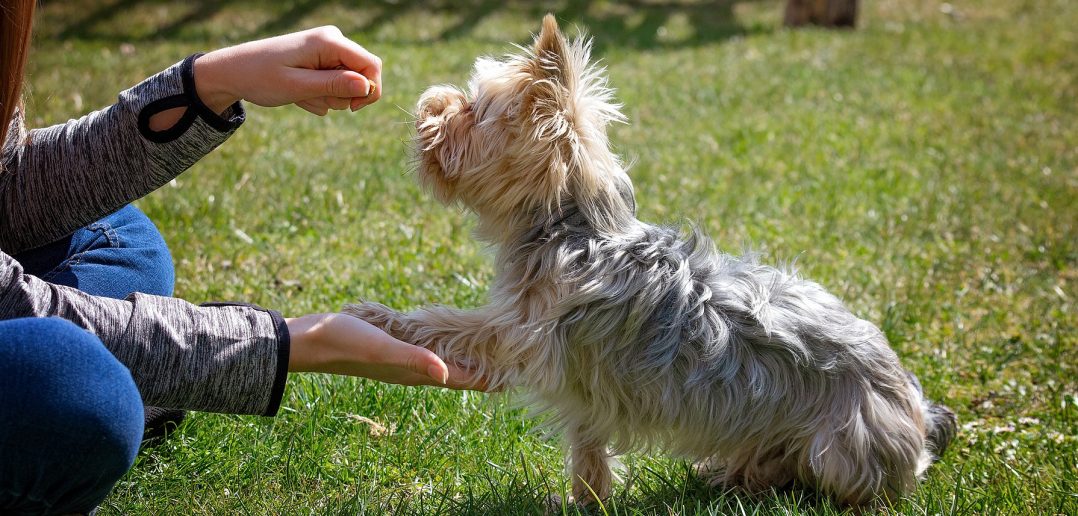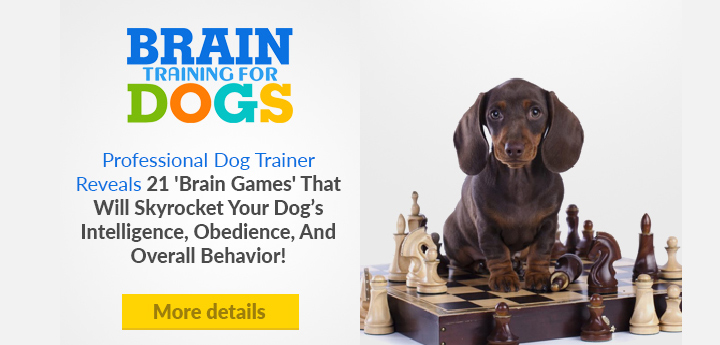Does trying to train your dog sometimes you question your sanity? You’re not alone!
Most of us start out with high hopes, whether we’re training a brand new puppy or trying to teach and old dog some new tricks. For me, the motivation usually hits on Saturday mornings after watching Lucky Dog. Have you seen it? If so, you know how easy Brandon makes it look and how inspiring it can be to watch a rescue pup transformed in half an hour.
Of course, he’s a professional, and he’s got a real gift for bonding and training canine companions. Some of the pups on that show seem to pick things up almost instantly. But don’t forget, it’s a show full of highlights and finished results.
The truth is, every dog is different. Some pick things up fast. Others need more time (and let’s be honest, some of us aren’t exactly professional trainers either). We want results right away. We imagine a few sessions and voilà, they’re perfectly behaved. But real life doesn’t work like that.
Training can be frustrating, messy, and slow. It takes patience, consistency, and a lot of grace, for your dog and for yourself. But if you stick with it, the payoff is worth it.
Here are four basic steps to help set you both up for success, no matter what kind of training approach you’re using.
1. Be Patient & Use Treats
Nothing speaks to your dog quite as well as a patient, calm, assertive voice and, of course, treats. The problem with treats is that (1) you can easily cause obesity in your pet and (2) they can be expensive. Keeping a supply of treats at home and learning to be more patient when you’re working with your dog is really important.
When your dog knows he’ll get rewarded for paying attention and reacting to your cues, he’s way more motivated to work with you instead of against you. When it comes to giving treats, it’s also important to know when to treat your dog during training sessions. Lure the behavior and then modify away from the treat towards praise.
Sometimes it requires a high reward treat (something they really, really love) but sometimes pieces of kibble work. Whatever you use, make sure it’s good for your dog and isn’t going to break the bank long term.
2. Be Clever & Use Training Aids
You want to use positive vibes when you work with your dog and one way to be clever with your approach is to look for new training aids that are exciting for both of you. Clickers (often used in conjunction with treats at first, of course) can allow you to rewards your dog’s good behavior without providing too many treats resulting in an overweight Fido. Long lunge lines (training leads) can help you practice calling your dog back without fear of letting him run loose.
If you have a fenced in back yard, awesome. Barriers are pretty good training aids to have. If not, outside areas protected with an invisible dog fence can help teach your dog the boundaries, even if training is not going exactly how you planned (or your Houdini hound manages to get outside without you).
New toys are often exciting training aids, too! Reward your dog for paying attention during your last training exercise with a Kong stuffed with some tasty (and healthy) treats. Fetch toys are also awesome for your and furry friend. And if you’ve never tried a game of hide and seek, you need to give that a try. Hide a small treat in one hand or the other and as they sniff to find it, use a boring “cold” when they sniff the empty hand and an excited “hot” when they sniff the hand holding the treat.
When you use training aids, you make training more interactive, safe, and fun for your dog. If you are simply repeating words and phrases over and over, trying to reason with your animal in a mostly human way, there is a chance that he’ll get bored and simply lose interest. And you will, too.
3. Be Consistent & Train At Home
Paying to go to dog training classes or hiring a dog trainer may work well for you and your dog. Sometimes getting the additional help and support from experts is just the thing you need to kickstart your dog training efforts. However, it’s essential that you don’t stop your behavior and the training techniques you and your dog are learning the moment class ends or as soon as that trainer leaves. You have to be consistent.
Use the same body language and cues consistently. Decide on the words you’ll use and stick with them. Teaching your dog to “Come” using that particular word (with a hand gesture is also handy) doesn’t work if sometimes you say “Come here, dude” and other times you say “Get over here.” It’s easy as humans to relay our messages in different ways but your dog needs to hear a calm, firm, kind command that he understands in order to be successful.
4. Be Positive & Concentrate on Bonding
It’s not easy to always be positive but it is really important to only approach training when you’re calm, cool, and collected and have a positive outlook about the endeavor. If you’re frustrated, your dog picks up on that. If you’re angry, he sees that, too. Dogs are great at picking up changes in our body language and subtle cues we emit even when we don’t realize it. It’s why a dog often comes to comfort a sad owner without being called. They just know.
Do your pal a favor and with every activity (training included) concentrate on building a strong bond. Spend time with your dog, pay attention to their body language and subtle cues, too. There will be days when all he wants to do is play and other days when he’s super responsive and more susceptible to new training ideas. Creating that unbreakable bond can be quite life-changing and your dog will respond much more positively for having that strong bond in place.
Bonus Tip
Consider getting some virtual help for working with your dog! Brain Training for Dogs is a great resource for eliminating any bad behaviors by tapping into your dog’s hidden intelligence. It’s great because it’s created by professional CPDT-KA certified dog trainer, Adrienne Farricelli, an advocate of gentle and force-free training techniques which rely on positive reinforcement instead of punishment.
Adrienne uses techniques that cause dogs to look forward to learning, and further strengthens the bond between dog and owner. There are 21 games to improve your dog’s intelligence (and behavior) along with easy to understand instructions for training obedience commands.





